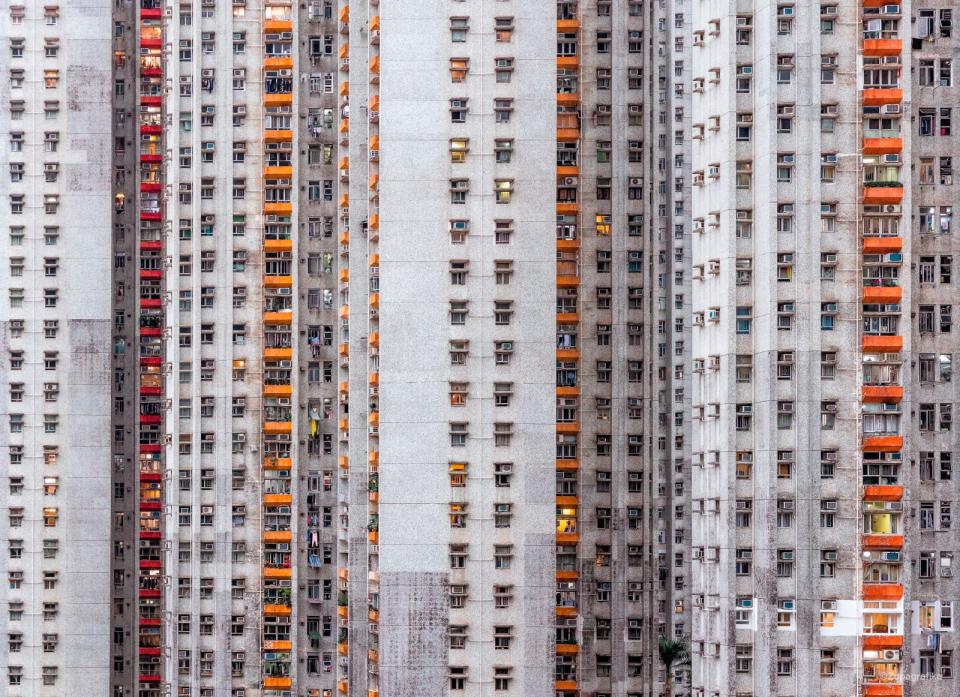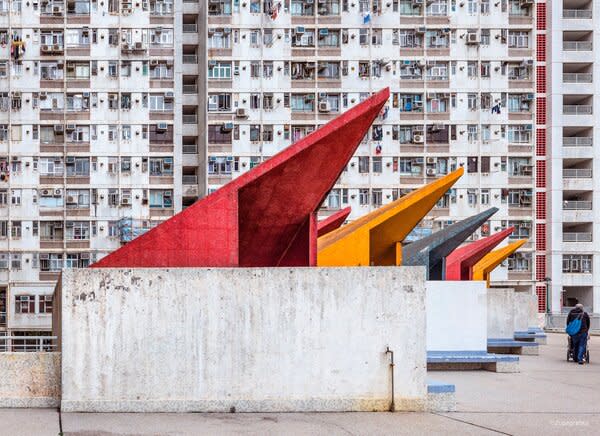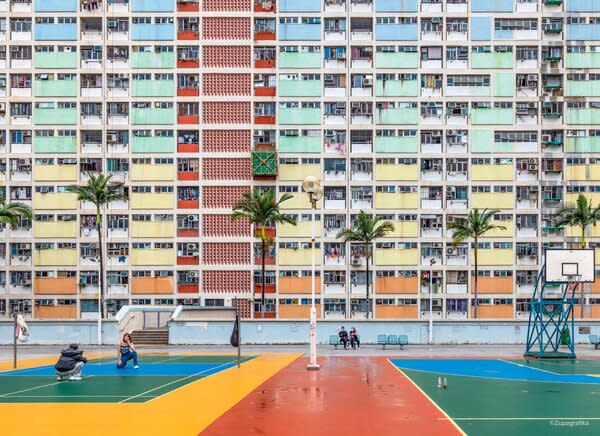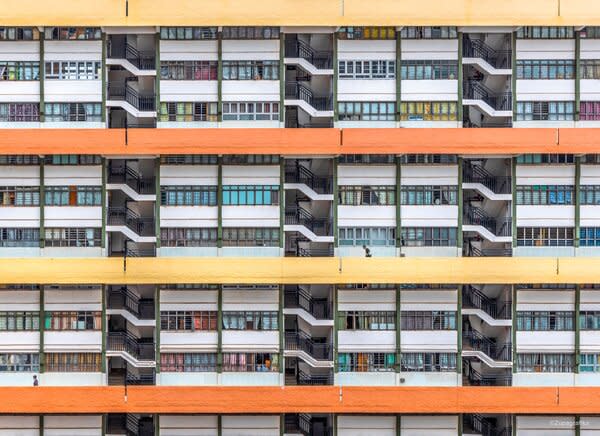An Up-Close Look at Hong Kong’s Famous Public Housing Complexes
A new photography book delves into the architectural heritage of the hulking affordable housing estates developed between the ’50s and ’80s.

There are 7.4 million people in Hong Kong, and nearly half of them live in subsidized housing. The origins of these essential buildings trace back to a shantytown fire on Christmas Day 1953, which left 53,000 people displaced. The government decided it needed to move quickly and, four days later, announced a plan to put all those residents in provisional two-story bungalows. The following year, the government accelerated the process by launching the Hong Kong Housing Authority and putting a plan in motion to build large, multistory H-shaped apartment blocks. These buildings would not only address the housing shortage caused by incidents like the fire, but also create much-needed space for low-income residents, elderly people, and people from rural areas who were moving into the city to work.
At the time, a shortage of government architects meant that early projects were instead doled out to private architectural practices, where each firm would be given a set lot and list of provisions and requirements, but would otherwise be allowed to pull from their own design aesthetic and personal ethic about what subsidized housing should or could be. That meant that each public housing estate could develop its own external personality, even if the interiors of the buildings—with their stacks of bare-bones, small-scale apartments—were fairly similar. Some architects used the wiggle room to add mild resident perks, like outdoor benches, small playgrounds, basketball courts for recreation, or concrete chess tables. (Since so many of the apartments have very little space for doing more than just sleeping or eating, the outdoor space is essential.) Some of the complexes also include space for schools, stores, or even the occasional entertainment venue or amphitheater.
Since Hong Kong’s public housing projects were developed between the mid-1950s and ’80s, the estates have housed millions of people in one of the world’s densest and least affordable places. The modernist-style high-rises have also become popular backdrops for social media posts, with buildings like the rainbow-hued Choi Hung Estate popping up all over Instagram. A new book, Concrete Hong Kong, from independent publisher Zupagrafika, aims to capture both the beauty and grime of some of these relatively stark structures, offering detailed looks at their architectural features through exterior photos and cardboard models readers can build themselves, allowing faraway audiences a sense of the housing blocks’ staggering size and scale.
Take, for instance, the aforementioned Choi Hung Estate. Built by Palmer and Turner (one of Hong Kong’s oldest architecture firms) between 1962 and 1964, the 11-block estate is among the oldest surviving housing projects in Hong Kong. When first constructed, the buildings housed over 43,000 people and their tiered design and communal outdoor spaces were so impressive that they drew dignitaries like Princess Margaret and even Richard Nixon, who played a game of badminton with some of the residents in 1964. These days, even though the buildings have gone viral, they only house about 18,000 tenants, and it was recently reported that the estate will likely be redeveloped, meaning all remaining residents will have to be relocated.
See the full story on Dwell.com: An Up-Close Look at Hong Kong’s Famous Public Housing Complexes
Related stories:




